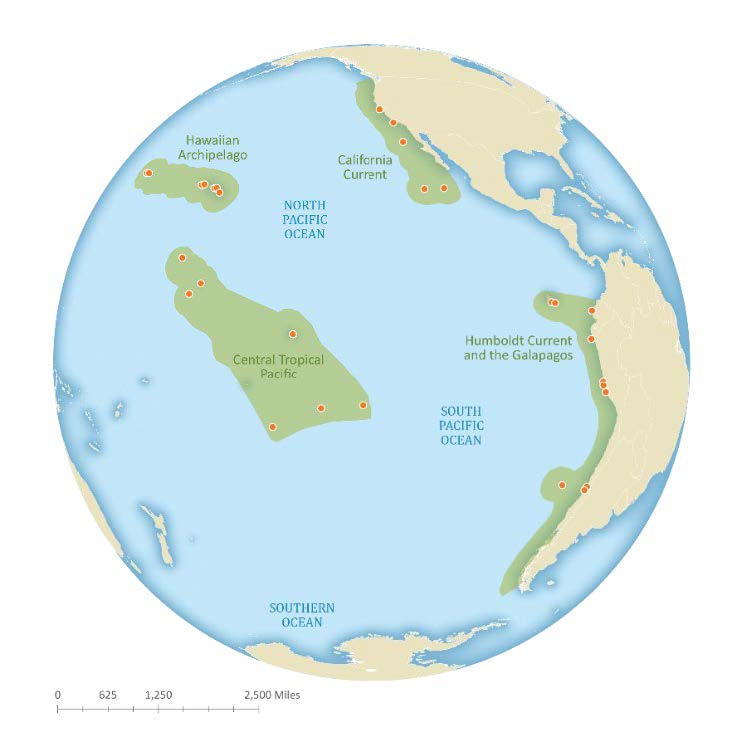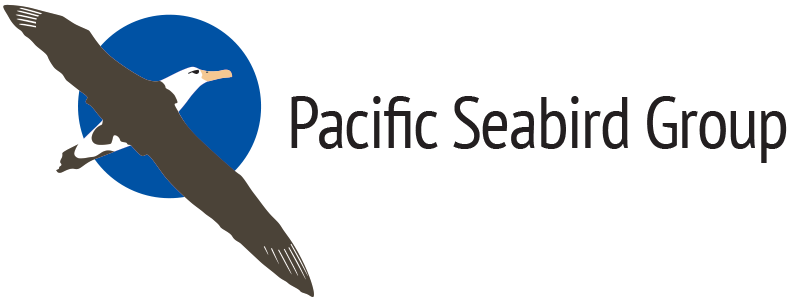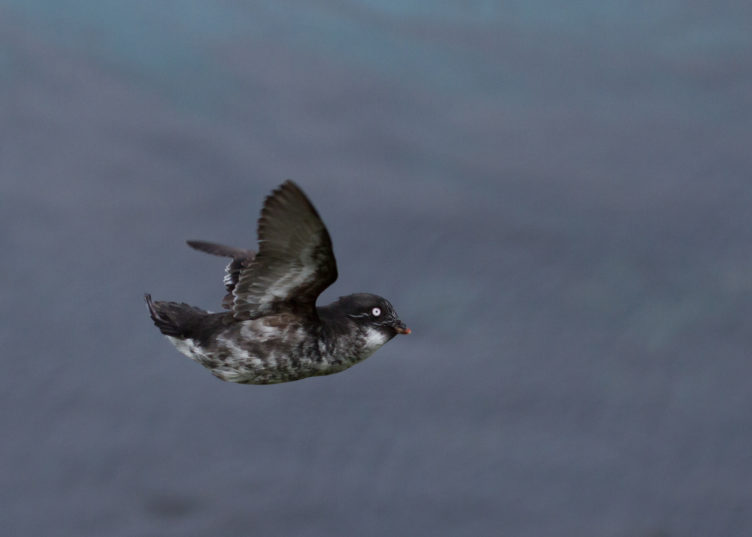NFWF Seabird Conservation Program 2024 Request for Proposals
The National Fish and Wildlife Foundation (NFWF) is accepting proposals to improve populations of focal seabirds through actions that increase survival and reproduction through implementation of one or more strategies. Full proposal due date: Monday, August 26, 2024, by 11:59 PM EST.
For complete information about the 2024 RFPs, click here.
OVERVIEW
The National Fish and Wildlife Foundation (NFWF) is accepting proposals to improve populations of focal seabirds through actions that increase survival and reproduction through implementation of one or more strategies. Seabirds represent a diverse group of birds whose life history is linked to marine and coastal resources. Seabirds forage at sea, often far from breeding sites; disperse over vast distances; and are both colonial and solitary breeders. Consequently, a major challenge to effective seabird conservation is to mitigate human-induced threats at multiple temporal and spatial scales; in other words, to protect and restore locations utilized by seabirds throughout their entire life cycle (on both land and at sea). NFWF’s Seabird Conservation Program is supported by the Pacific Seabirds Business Plan 2022. This request for proposals will award approximately $6,920,000 in support of Pacific seabird conservation efforts in 2024. Funding support for this RFP comes from the Department of the Navy – Marine Corp, the U.S. Fish and Wildlife Service, and private funding sources.
GEOGRAPHIC FOCUS
The 2024 Request for Proposals (RFP) will consider projects from four broad geographies within the Pacific: 1) California Current, 2) Hawaiian Archipelago, 3) Humboldt Current, and 4) locations in the central tropical Pacific supporting priority species listed in the business plan.

This year’s Request for Proposals will consider projects within four broad geographies in within the Pacific.
PROGRAM PRIORITIES
All proposals must specifically address how projects will directly and measurably contribute to the accomplishment of program goals. The priorities listed below align with the Pacific Seabirds Business Plan 2022.
1) Management of non-native, invasive animals: Introduced animals alter fragile island ecosystems through direct predation on seabirds and through destruction of breeding habitats. Focal geographies for this activity include all four geographies.
a. NFWF will consider proposals that advance and implement eradications on Clarion Island, Mexico (Townsend’s shearwater); Rapa Iti (islets), French Polynesia (Rapa shearwater); the Marquesas, French Polynesia (Phoenix petrel, Polynesian storm-petrel); and on Henderson Island (Henderson petrel). Additional eradication actions will be reviewed on a case-by-case basis.
b. NFWF seeks projects that advance in situ protection of nesting Galapagos petrel, Hawaiian petrel and Newell’s shearwater through installation or repair of fencing and/or predator control; predator proof fencing projects for additional focal species are encouraged and will also be considered.
i. NFWF seeks proposals that support construction of a 16,000-foot-long mammalian exclusion fence on James Campbell NWR, Oahu to protect coastal strand, dune, and wetland habitat for a suite of at-risk species including black-footed albatross. NFWF and partners are planning to pool resources towards implementation of landscape level habitat protection and restoration on this refuge. Once completed, this will be the largest mammalian exclusion fence constructed in Hawaii. Restoration of the protected habitat will also be a priority for this partnership. Total current funding available for this RFP priority is approximately $2,500,000.
2) Restoration: Invasive plants degrade nesting habitat, sea level rise threatens low lying colonies, and human actions can impact survival and reproduction of seabirds. Focal geographies for this activity include all four geographies.
a. NFWF seeks proposals that advance habitat restoration for black-footed albatross (Kure and Midway Atolls), Galapagos petrel (private lands, multiple islands) and waved albatross (Espanola Island, Ecuador).
b. NFWF also seeks proposals that advance social attraction and species translocations to establish resilient breeding populations for the following focal species (Ainley’s storm-petrel, black-footed albatross, Hawaiian petrel, Newell’s shearwater, Phoenix petrel, Polynesian storm-petrel, and Townsend’s shearwater).
c. NFWF welcomes proposals that involve outreach to communities, foster community engagement, and increase organizational and individual technical capacity to assess, monitor and address threats for focal seabird species. When possible, projects should be developed through community input and co-design processes. Additionally, projects should engage community-level partners to help implement and maintain projects to secure maximum benefits for communities and sustainability post-grant award. Proposals that advance opportunities to build diversity of early career scientists pursuing marine bird studies will also be considered.
3) Bycatch reduction: Seabird bycatch by fisheries is a global problem, killing hundreds of thousands of seabirds annually. Focal geographies for this activity include the California Current, Hawaiian archipelago, and the Humboldt Current.
a. NFWF seeks proposals that assess and fill data gaps on bycatch risk, including integration of large data sets to better understand bycatch risk and potential hotspot locations. NFWF will also support actions that foster research and innovation of fishing gear and mitigation techniques, and that conduct outreach and training, towards adoption and use of best practices and effective mitigation measures in fisheries with an emphasis on fisheries that impact black-footed albatross, Humboldt penguin, and waved albatross.
4) Research and Monitoring: The wide-ranging, pelagic nature of seabirds is a challenge to understanding and addressing conservation needs. NFWF will invest in research, monitoring, focal species tracking projects, and assessment actions to improve the effectiveness of species conservation, strategies, and the delivery and reporting of conservation actions for focal species. Focal geographies for this activity include all four geographies.
a. This RFP seeks projects that support effectiveness monitoring for ongoing or recently completed project activities benefiting business plan focal species.
b. We also seek projects that improve coordination and standardization of monitoring for Galapagos petrel.
5) Prospective species: The following prospective focal species and sites require additional information and/or investment before NFWF can include them as species with measurable conservation goals in the business plan. Focal geographies for this activity include the California Current.
a. Craveri’s murrelet (Mexico). NFWF seeks projects that support actions to address data gaps including a threat review (bycatch, marine pollution, forage depletion, predation/disturbance) and the completion of an assessment of current distribution using standardized methods.
PROJECT METRICS
To better gauge progress on individual grants and to ensure greater consistency of project data provided by multiple grants, the Pacific Seabird Program has a list of metrics in Easygrants for full proposal applicants to choose from for future reporting. We ask that applicants select only the most relevant metrics from this list for their project (all possible program metrics are shown in the table below). If you think an applicable metric has not been provided, please contact Scott.Hall@nfwf.org to discuss acceptable alternatives.
For complete information about the 2024 RFPs and how to apply, click here.
For more information or questions about this RFP, please contact Scott Hall (Scott.Hall@nfwf.org).






